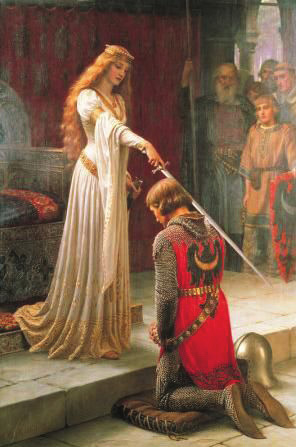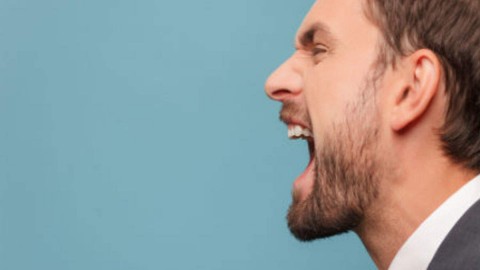“The next step after the perfection of posture is breath control – PRANAYAM – WHICH IS ACCOMPLISHED THROUGH HOLDING THE BREATH ON INHALATION AND EXHALATION, OR STOPPING THE BREATH SUDDENLY.”
When you breathe in, there comes a moment when the breath has completely gone in – for a certain second breathing stops. The same happens when you exhale. You breathe out: when the breath is completely released, for a certain second, again, breathing stops. In those moments you face death, and to face death is to face God. To face death is to face God – I repeat it – because when you die, God lives in you. Only after the crucifixion is there resurrection. That’s why I say Patanjali is teaching the art of dying.
When the breathing stops, when there is no breathing, you are exactly in the same stage as you will be in when you will die. For a second you are in tune with death – breathing has stopped. The whole of THE BOOK OF THE SECRETS, VIGYAN BHAIRAV TANTRA, is concerned with it – emphatically concerned with it – because if you can enter into that stoppage, there is the door.
It is very subtle and narrow. Jesus has said again and again, “Narrow is my way – straight, but narrow, very narrow.” Kabir has said, “Two cannot pass together, only one.” So narrow that if you are a crowd inside, you cannot pass. If you are even divided in two – left and right – you cannot pass. If you become one, a unison, a harmony, then you can pass.
Narrow is the way. Straight, of course; it is not a crooked thing. It goes directly to the temple of the divine, but very narrow. You cannot take anybody with you.
You cannot take your things with you. You cannot take your knowledge. You cannot take your sacrifices. You cannot take your woman, your children. You cannot take anybody. In fact you cannot take even your ego, even yourself. You will pass through it, but everything else other than your purest being has to be left at the door. Yes, narrow is the way. Straight, but narrow.
And these are the moments to find the way: when the breath goes in and stops for a second; when the breath goes out and stops for a second. Attune yourself to become more and more aware of these stops, these gaps. Through these gaps, God enters you like death.
Somebody was telling me, “In the West, we don’t have any parallel like Yama, the god of death.” And he was asking me, “Why do you call death a god? Death is the enemy. Why should death be called a god? If you call death the devil it is okay, but why do you call it a god?” I said we call it a god very considerably: because death is the door to God. In fact death is deeper than life – life that you know. Not the life that I know. Your death is deeper than your life, and when you move through that death you will come to a life which doesn’t belong to you or me or to anybody. It is the life of the whole. Death is God.
A whole Upanishad exists, kathopanishad: the whole story, the whole parable is that a small child is sent to Death to learn the secret of life. Absurd, patently absurd. Why go to Death to learn the secret of life? Looks like a paradox, but it is reality. If you want to know life – real life – you will have to ask Death, because when your so-called life stops, only then real life functions.
“The next step after the perfection of posture is pranayam, which is accomplished through holding the breath….” So when you inhale, hold it a little longer so that the gate can be felt. When you exhale it, hold it outside a little longer so that you can feel the gap a little more easily; you have a little more time.” … Or stopping the breath suddenly.” Or, anytime, stop the breath suddenly. Walking on the road: stop it – just a sudden jerk, and death enters. Anytime you can stop the breath suddenly, anywhere, in that stopping, death enters.
THE DURATION AND FREQUENCY OF THE CONTROLLED BREATHS ARE CONDITIONED BY TIME AND PLACE, AND BECOME MORE PROLONGED AND SUBTLE.
The more you do these stoppages, the gaps, the more the gate becomes a little wider; you can feel it more. Try it. Make it a part of your life. Whenever you are not doing anything, let the breath go in… stop it. Feel there; somewhere there is the door. It is dark; you will have to grope. The door is not immediately available. You will have to grope… but you will find.
And whenever you will stop the breath, thoughts will stop immediately. Try it.
Suddenly stop the breath: and immediately there is a break and thoughts stop, because thoughts and breaths both belong to life – this so-called life. In the other life, the divine life, breathing is not needed. You live; there is no need to breathe.
And thoughts are not needed. You live; thoughts are not needed. Thoughts and breath are part of the physical world. No-thought, no-breath, are part of the eternal world.
THERE IS A FOURTH SPHERE OF BREATH CONTROL, WHICH IS INTERNAL, AND IT GOES BEYOND THE OTHER THREE.
Patanjali says these three – stopping inside, stopping outside, stopping suddenly – and there is a fourth which is internal. That fourth has been emphasized by Buddha very much; he calls it “anapanasati yoga.” He says, “Don’t try to stop anywhere. Simply watch the whole process of breath.” The breath coming in – you watch, don’t miss a single point. The breath is coming in – you go on watching. Then there is a stop, automatic stop, when the breath has entered you – watch the stop. Don’t do anything; simply be a watcher. Then the breath starts for the outer journey – go on watching. When the breath is completely out, stops – watch that stop also. Then the breath goes on coming in, going out, coming in, going out – you simply watch. This is the fourth: just by watching you become separate from the breath.
When you are separate from the breath you are separate from the thoughts. In fact breath is the parallel process in the body to thoughts in the mind. Thoughts move in the mind; breath moves in the body. They are parallel forces, two aspects of the same coin. Patanjali also refers to it, although he has not emphasized the fourth. He simply refers to it, but Buddha has completely focused his whole attention on the fourth; he never talks about the three. The whole Buddhist meditation is the fourth.
“There is a fourth sphere of PRANAYAM” – that is of witnessing – “which is internal, and it goes beyond the other three.” But Patanjali is really very scientific.
He never uses the fourth, but he says that it is beyond the three. Must be Patanjali didn’t have as beautiful a group of disciples as Buddha had. Patanjali must have been working with more body oriented people, and Buddha was working with more mind oriented people. He says that the fourth goes beyond the three, but he himself never uses it – he goes on saying all that can be said about yoga. That’s why I say he is the alpha and the omega, the beginning and the end: he has not left out a single point. Patanjali’s YOGA SUTRAS cannot be improved.
There are only two people in the world who created a whole science alone. One is Aristotle, in the West, who created the science of logic – alone, with nobody’s cooperation. And for these two thousand years nothing has been improved; it remains the same. It remains perfect. Another is Patanjali, who created the whole science of yoga – which is many times, a million times greater than logic – alone.
And it could not be improved; it has not been improved; and I don’t see any point how it can be improved any day. The whole science is there, perfect, absolutely perfect.
Tags: Patanjali Yoga Sutra 29 Holding The Breath










